Simone, from Lonate Ceppino to Ireland to “save the Internet”
Simone Iadanza is an engineering physicist involved in a study about photonic crystals, that aims to reduce the energy consumption of data exchanges. He won FameLab, a competition that rewards communicative skills.
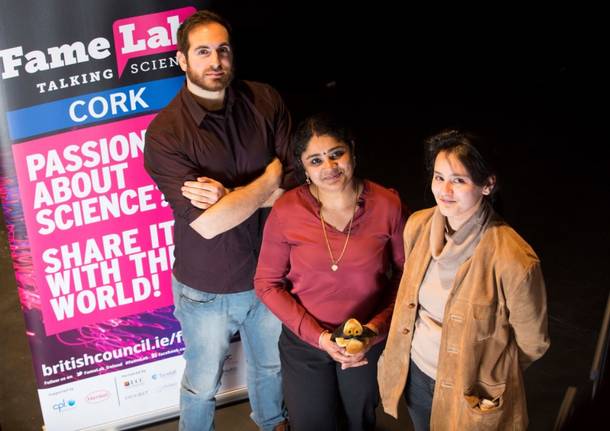
Simone Iadanza is a member of the so-called “brain drain” phenomenon. However, in reality, Simone is in Ireland in order to participate in the most interesting research project among the ones that were available when he graduated. With a prestigious academic qualification in Engineering Physics and a major in nanotechnology his pocket, now he’s in University College Cork to study the infinitely small particles and their potential in order to make the Internet faster and cheaper. An achievement that can change our everyday lives…
The news about his post-graduation career arrived in Italy thanks to a competition that he won: the regional edition of “FameLab”, a competition that forces you to speak in front of a large crowd on a scientific subject without any equipment or slides, just using your words. Simone was able to access the national finals thanks to his speech about “photonic crystals”, a difficult subject for most. His clarity is a natural gift, combined with his infinite curiosity for a subject that still has so much to uncover: physics.
Everything started in Lonate Ceppino. How did you become a “brain at the service of physics”?
First I attended elementary and middle school in Lonate Ceppino; then I grew very interested in science, and I decided to attend the PNI Scientific course (national informatics plan) of the Marie Curie High school in Tradate. Even at that time my ideas about my academic future were more or less clear, and the choice was in fact between various Physics courses at Unimi and Bicocca, and the Engineering Physics course at the Polytechnic of Milan. After taking part in the open days of various courses and considering their study plans, I enrolled at the PolyMI. Then I got my Bachelor’s degree in Engineering Physics and then I decided to get a major in nanotechnology, and I got a master’s degree in Materials Engineering and Nanotechnology (a 100% English course, always at the PolyMI, that represents an added value for potential abroad opportunities).
When was your passion for Physics born?
I really don’t know when. My parents are always telling me about how, since I was very young, I used to ask about the universe and natural phenomena; I was very insistent and used to ask in the most inopportune moments. I remember that during my childhood I had a compelling need to dismantle everything to look at its components and try to understand their functions. Today, this could be called Reverse Engineering, or my condition, obsessive disorder… The fact is that since I learned to read, first in the library and then on the Internet, I would always consult some strange book or article about Black Holes, or the forming of bolts of lightning. Then, growing and studying, I grew always more interested in the infinitely small, in nanotechnology and in quantum mechanics to describe its behaviours. However, the more accurate my studies were, the more I realised how much was unknown compared to my knowledge. And that nurtured, and still nurtures, the need to know.
POST-UNIVERSITY CAREER
While I was writing my thesis, after having completed my research on it inside the laboratory, I started reading the forum of different research groups from universities all around Europe. Doing so, I stumbled across some projects concerning fields which were, for me, a source of great interest and decided to contact the professors in charge asking if there were any openings in the research team for me to apply. Among those who replied that indeed there was a place for me in their research team, I choose to apply for the project which I considered more interesting both for it’s subject (involving the field of photonic and optoelectronics) and for it’s experimental aspect.
This is how I met Dr. Liam O’Faolain, who was the director of the Nanophotonic Group at the St. Andrew University (UK,) and is now my doctoral advisor at Cork. After testing my knowledge through many Skype interviews with him (and later with the then head of the Physics department here at Cork Institute of Technology,) I was selected and granted a scholarship by ERC (European Research Council) for that project. This way I became part of Dr. Liam’s Nanophotonic Group which had moved form Scotland to Cork in Ireland in order to have access to the Clean-Room of the Tyndall National Institute.
HOW IS YOUR LIFE AT CORK?
For now it’s great! The city although, it is the second most populated city in Ireland, is very comfortable to live in and the people here are nice and polite. It is also a melting pot and every day, walking in the streets, you can overhear conversation in a number of languages like Spanish, French, Polish, Russian, Japanese … and obviously Italian.
Regarding physics, or science in general, the Irish government is spending a lot on research, and for this reason the city is a gold mine of opportunity for project and collaboration between universities, enterprises and industries. This fact is a magnet for people all around the world, those professionals move here and bring with them their culture and are ready to discover the aspects of the others, adding to the pot and encouraging curiosity.
Also, weather aside (here, in a feat which I used to think impossible, it rains even more then in the provinces of Varese,) after almost two years, I’ve adjusted to the differences in the sunlight hours.
EXPLAIN TO US IN A FEW WORLS THE POTENTIAL OF YOUR CURRENT RESEARCH
With the coming of the Internet, the world is capable of exchanging knowledge and gathering an unimaginable amount of data over an also unimaginable range of applications. Just think of the number of equipment we connect each day with one another. I’m talking about Smartphones and computers but also about sensors for the aviation, environment and healthcare, transportation, satellite and industrial production. This load of data is also increasing every second at a monstrous rate. Humanity has produced more data in the last two years then in the rest of its history. To manage this load the computation capacity of our computers must increase accordantly every year and so must the speed of our internet connection used for the exchange of those data. All this leads to an incredible electricity consumption in the operation and the cooling systems of the datacentre (big warehouses topped full with computers which manage the exchange of data in the cyberspace.) Today, 2% of all the energy produced is used for this process and, if nothing changes, inside 5 years, humanity will not be able to produce enough energy to continue to operate and work with Internet. However, despite the beliefs of most people, the greatest part of the energy consumed inside the datacenters is not used by the transistors but by the electric links between CPUs needed for the flowing of data between microchips.
My current research aims to develop an hardware capable of substituting those electric links on the microchips of every computer with optical ones which use light to transmit the data between the transistors. Such links consume 1000 less energy and can be 1000 times faster then the current ones. However in order for those links to be added to the current microchips we have to find a way to catch the light inside a minuscule space (hundreds of nanometers) and at the right time.
In order to do so we get our reference from nature, building photonic crystals: materials composed by minuscules structures which repeat themselves regularly in any given length of space and are similar to those that can be found on a butterfly or the skin of a chameleon. Those crystals interact with the light creating patterns that can trap it in a very confined space. We have recently come up with and build such structures. We are now in the experimental phase and we are having some very promising results. The next steps are the integration of the crystals with the microchips and the experimentation of the complete product. And maybe we will be able to save “the Internet”.
WHY HAVE YOU TAKEN PART IN THIS COMPETITION?
Fist of all, because it looked to me like a nice challenge. Accurately describing your research project to people outside my field of expertise, without the support of pictures of slides, and with very little time at your disposal (3 minutes,) was way harder than I had thought before actually getting down to do it.
It also looked fun and engaging, and I throw myself to it. It was a rush decision. At the beginning my greatest fear was to make the research group I’m working with look bad, but in the end it ended up better than I thought.
YOUR RESEARCH CAN CHANGE OUR EVERYDAY LIFE. EXPLANING THE VALUE OF YOUR RESEARCH TO THE PUBLIC IS THE DUTY OF EVERY RESERCHER?
I firmly believe that a clear explanation of ones own research to the public is a civil and moral duty of every researcher.
A civil duty because as it is often the case, research is founded by a public investment and as such, it is important for the public to understand how and why their money needs to be spent on it. This is for the good of all, as once it is clear to everyone the advantages that the research has on our every-day life and the public problems it solves, it will come naturally for everyone to invest their money in it.
A moral duty as we have an obligation to the world to show that there are not only problems but also a possible solution to them through the exercise of science and the application of technologies. We have to make the people believe that through scientific research, we can live better and open ourselves to a new future.
Naturally it is always difficult to exit our own zone of comfort and bring our research to the general public and to do so, one needs to use communication skills which we scientists often do not train as much as we should.
However I’m feeling more and more often the will of the scientific community to make its voice heard. Examples like FameLab are becoming more and more common and the attendance at such event is increasing as well. There is always room for improvement but the involvement of the scientific community in the communication sphere is growing.
WHAT DID YOU LEARN AND WHAT ARE YOUR LEARNING FROM THE FAMELAB COMPETITION?
I’ve seen in this competition a chance for a personal growth and a way to learn how to use some of the skills that we all have but of which we scientists often overlook as they are not directly linked with the solution to our scientific problems. This project gave me also the opportunity to take a step back and look at my project from the outside, a rare occasion when working submerged by mathematical models and rivers of data on experiments, and the needs to take out from my research the key concepts and explain it in a plain and direct way give me a new prospective and helped me understand better in which direction it is heading. It also helped me to pinpoint the key aspects of the technology (and the physics behind it) that we are developing, in order to compare it with the other solutions on the field and start an important and constructive scientific discussions which are at the base of every technological improvement.
This process of extrapolation and synthesis of the concepts behind the research and their enunciation in a clear and understandable manner for everyone is one of the pillars of communication, both scientific and not, and for this very reason it is a key to help everybody in the growth of the prevision of the choices that we will be called to make one day.
TAG ARTICOLO
La community di VareseNews
Loro ne fanno già parte
Ultimi commenti
Emanuele Zanetti su Motociclista di Ferno ucciso da un orso in Romania
GrandeFratello su Superate le 700 firme per la petizione sul recupero del Grand Hotel Campo dei Fiori di Varese
Felice su Motociclista di Ferno ucciso da un orso in Romania
Stefano64 su Neil Young torna dopo l'enorme successo di Harvest: ma non è il disco che tutti si aspettano
Alessandro Zanzi su Superate le 700 firme per la petizione sul recupero del Grand Hotel Campo dei Fiori di Varese
Felice su La bibliocabina, la panchina e il cane che fa pipì. A Fagnano Olona scoppia la polemica



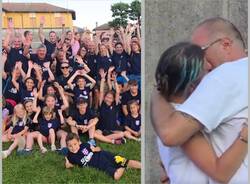
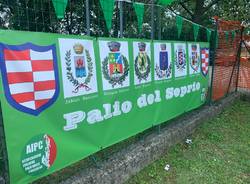





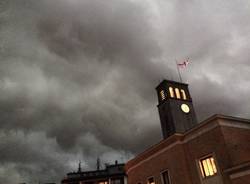
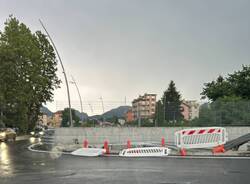

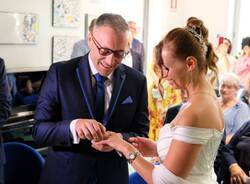


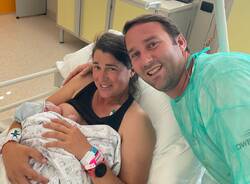

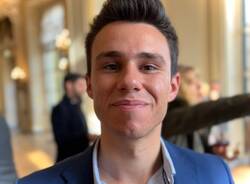

Accedi o registrati per commentare questo articolo.
L'email è richiesta ma non verrà mostrata ai visitatori. Il contenuto di questo commento esprime il pensiero dell'autore e non rappresenta la linea editoriale di VareseNews.it, che rimane autonoma e indipendente. I messaggi inclusi nei commenti non sono testi giornalistici, ma post inviati dai singoli lettori che possono essere automaticamente pubblicati senza filtro preventivo. I commenti che includano uno o più link a siti esterni verranno rimossi in automatico dal sistema.